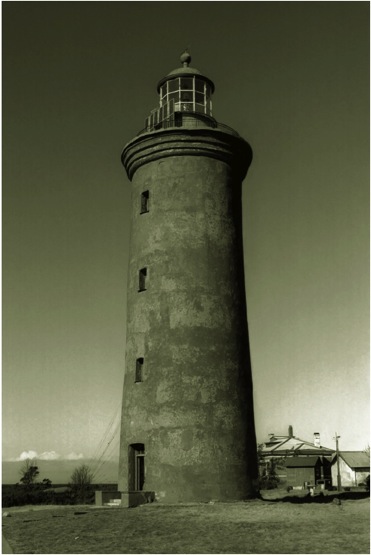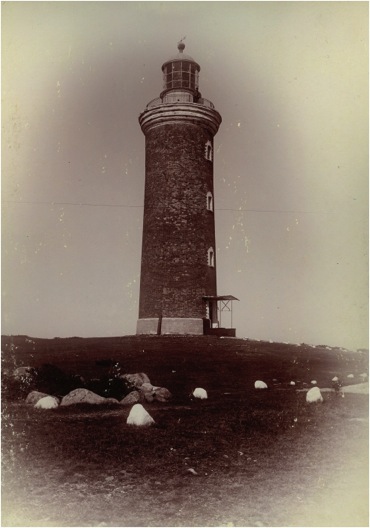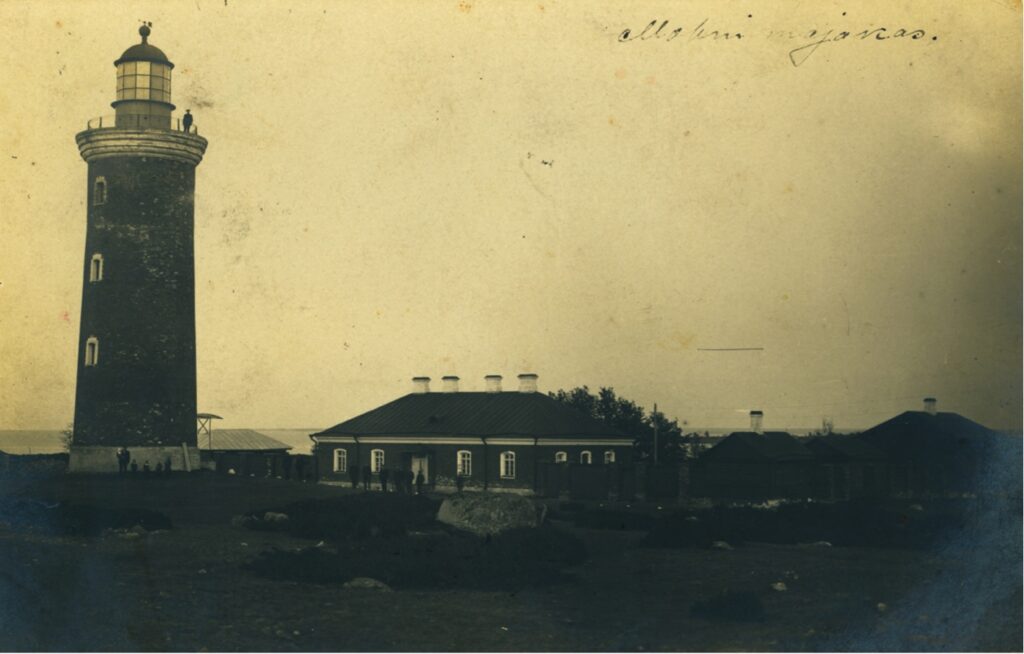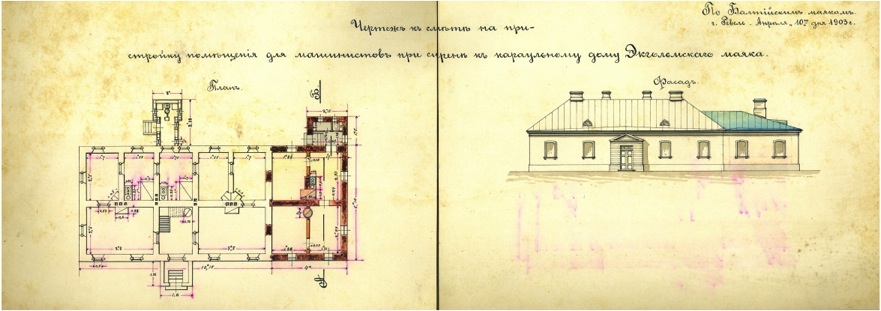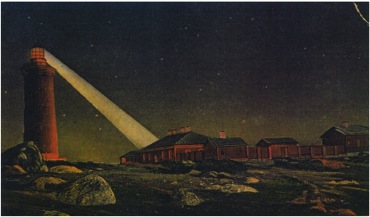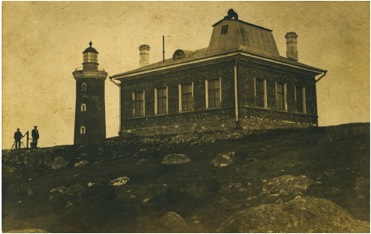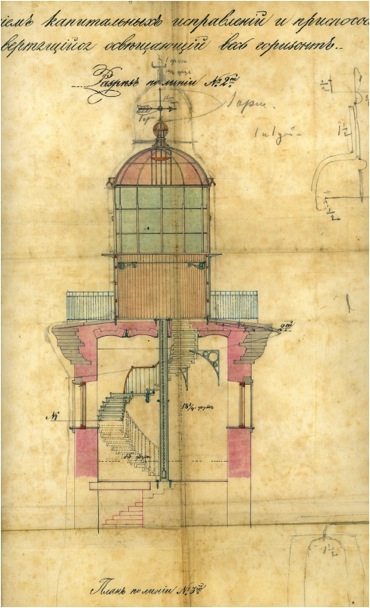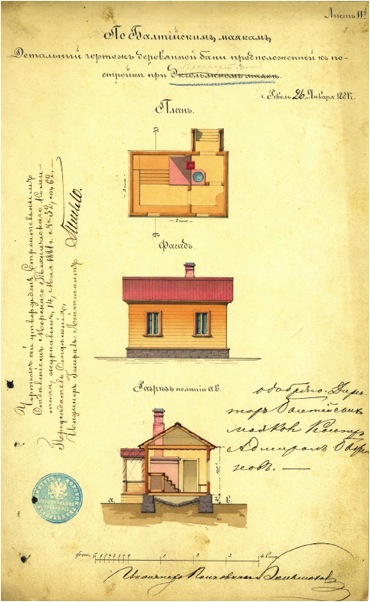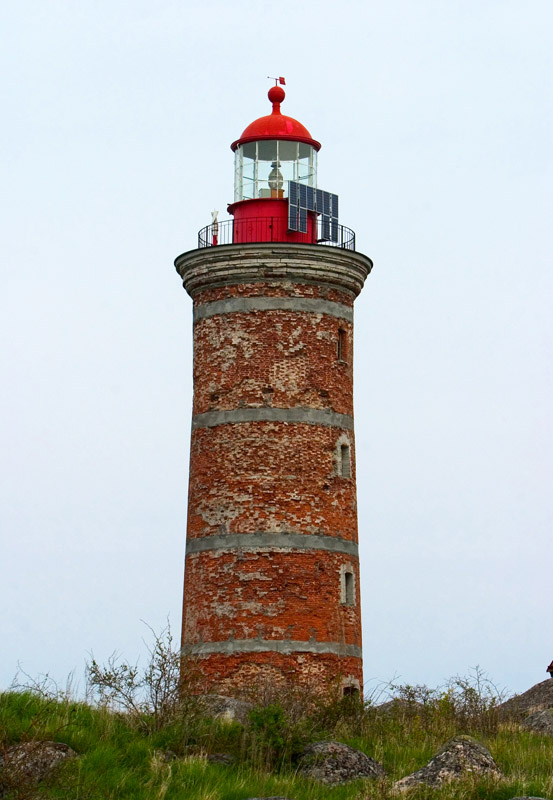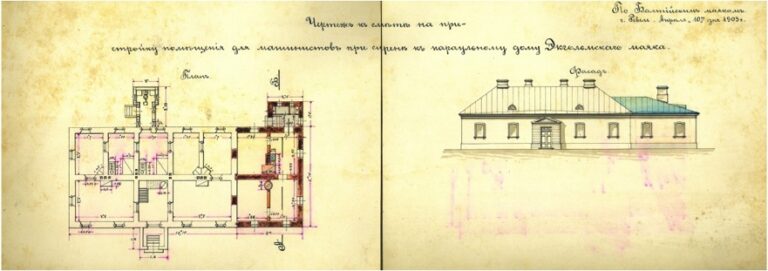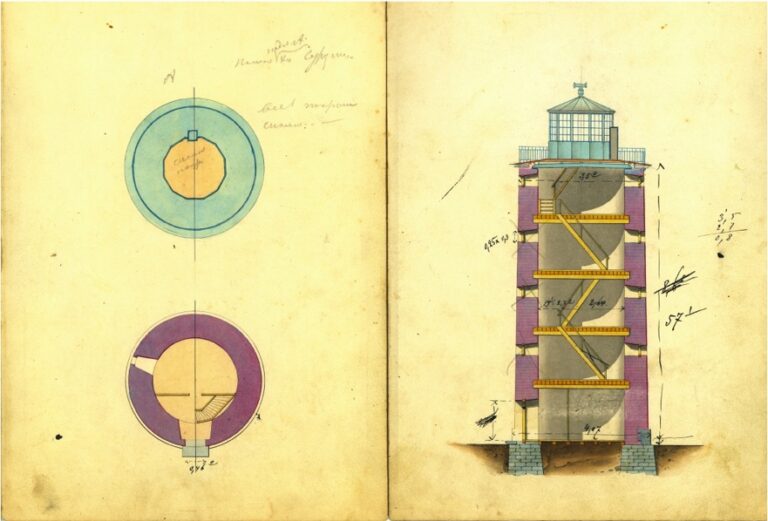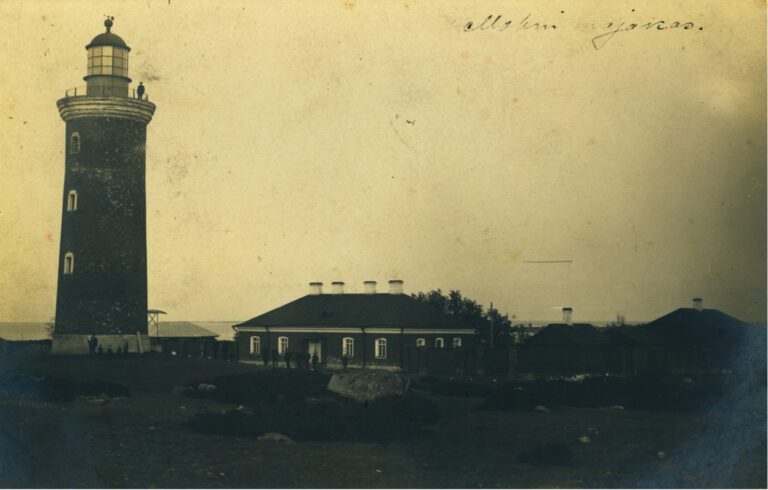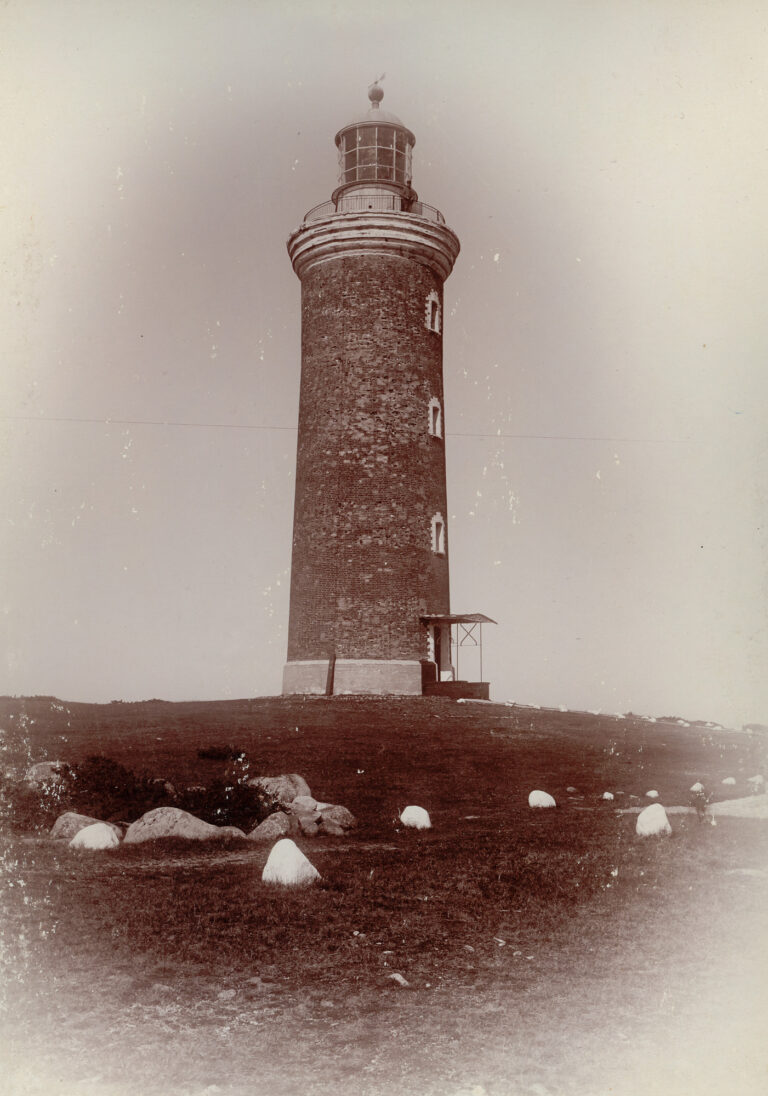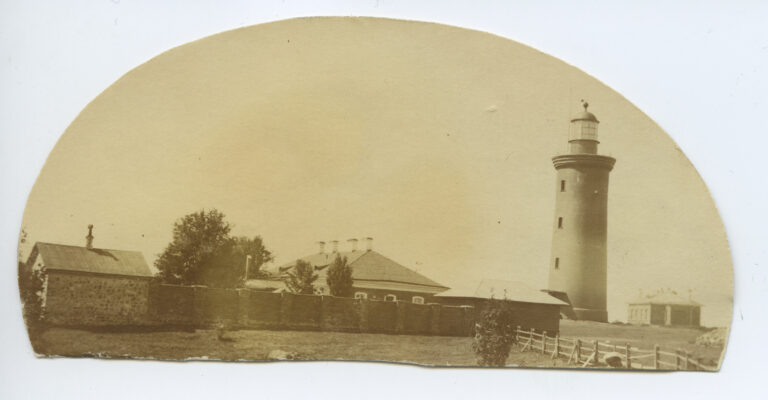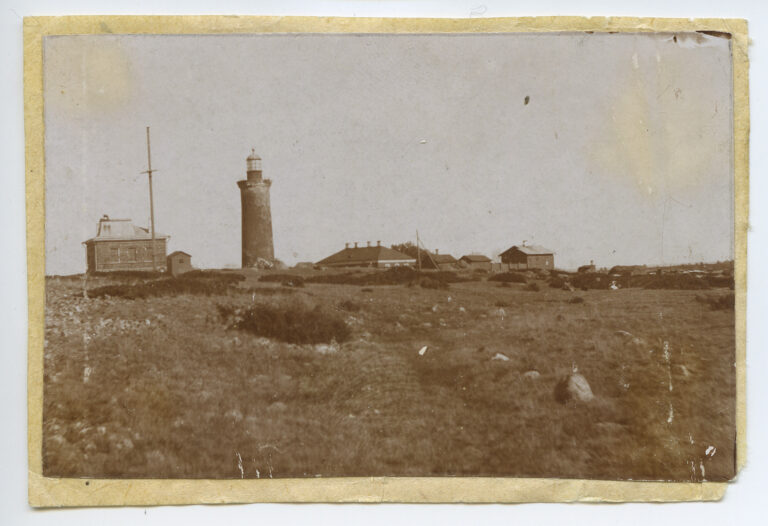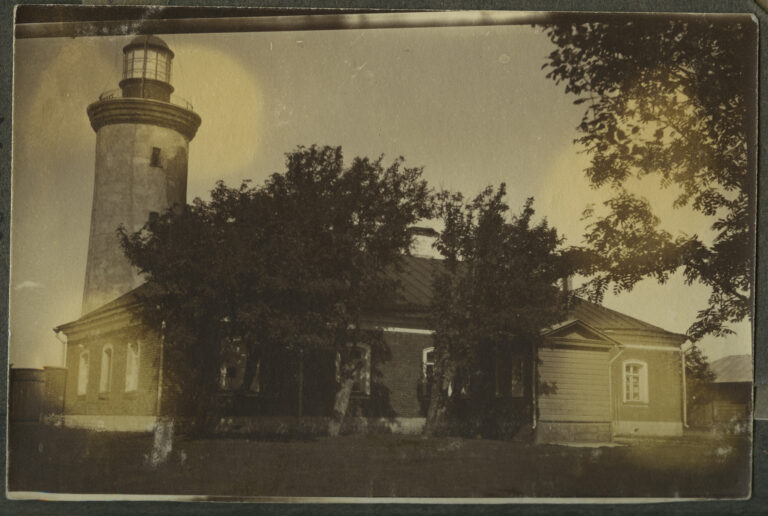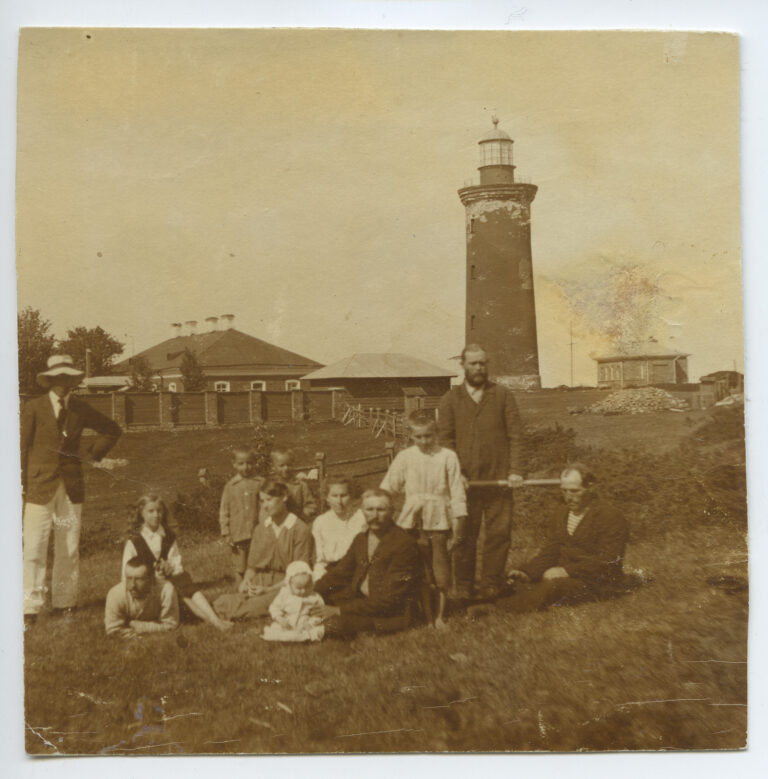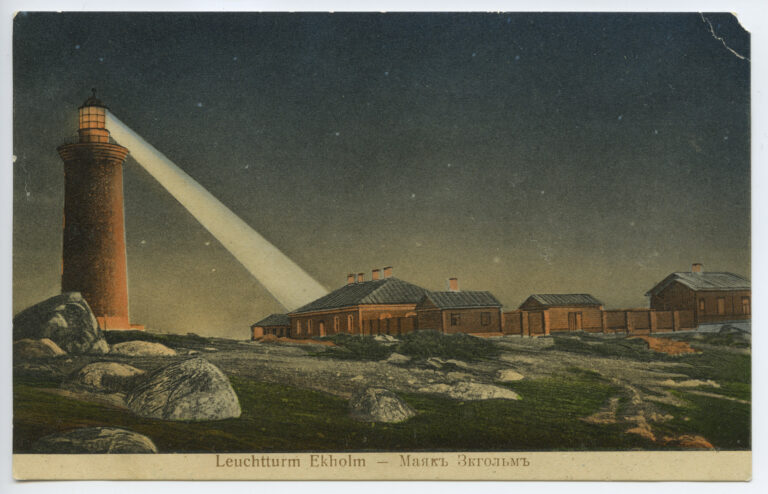According to legend, the old name of the island of Mohni, "Monasaar" or "Monesaar", may have originated from the fact that in the Middle Ages, the island was inhabited by some Gothic monks who lived off fishing and what the sea brought ashore. The catches from the stranded ships were sometimes quite plentiful. The men who had lived in isolation on the island for many years had gone wild and become sworn slaves. It was a favourable place for it, and on stormy nights, false lights lit on the shore drove many a ship onto the rocks. The men had become real bandits. At last they tried to catch them, but the men went into hiding in the thick forest that covered the island. Then the forest was set on fire and burnt down with the monks (Anto Juske, 2004, Legends of Mohn).
The cylindrical brick lighthouse is located in the north-western part of the island of Mohn (Ekholm) in the Gulf of Finland and is an important landmark for marking the seaward edge of the northern coast, orientation and location. Three fishermen's houses are known to have existed in the eastern part of the island since the early 19th century.
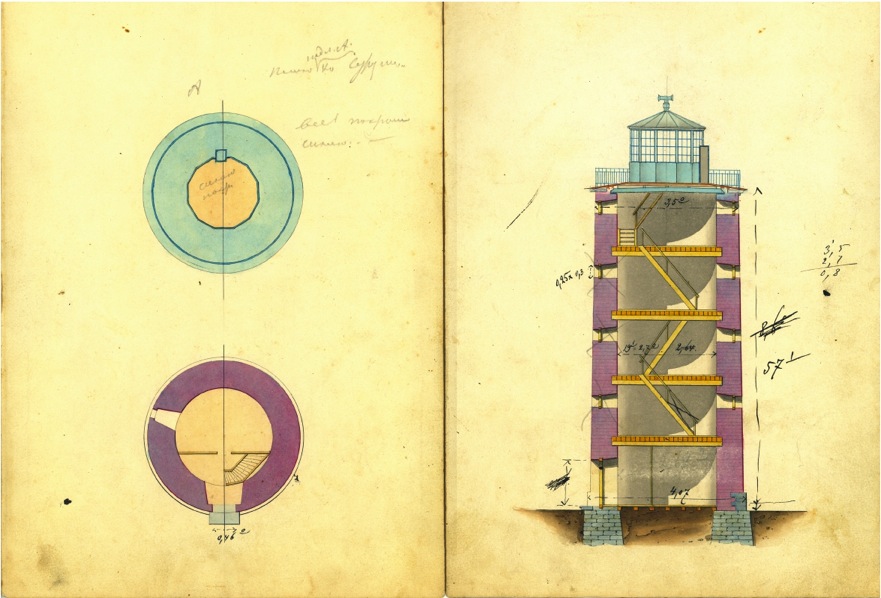
In 1806, the first eight-storey wooden lighthouse was built on the island of Mohn. In 1852, a 20-metre brick lighthouse was completed, with a permanent light 27 metres above sea level and visible for 11 miles. Just a few years after its completion, the brick lining of the building failed to withstand the weather and the walls began to buckle. To stop this, in 1867 the facades were treated with lead mennonite. However, the height of the fire was apparently too low, and in 1871 the lighthouse was rebuilt to a height of 27 m, covered on the outside with a new brick lining and repainted with oil paint. As an innovation, a lantern room was ordered from the Liepaja foundry and a rotating dioptric apparatus of the second order was ordered from the English firm Chance Brothers & Co. The prismatic lens rotated on roller bearings and the weight, which was suspended in a shaft in the centre of the lighthouse, had to be lifted every 40 minutes. The plink of the rotating light, 33 m above sea level, was visible every 30 seconds for 12 miles.
In 1880, a stone kerosene bath was added, and in 1904, a siren building and a pneumatic siren were installed.
In 1996, automated solar and wind-powered lighting was installed. As the brick cladding continued to deteriorate, it was covered with a concrete cladding after World War II, which was removed in 1998. A major restoration of the exterior wall is planned for the future.
More than a dozen service buildings survive, of which the superintendent's dwelling, servants' house, sauna and cellar were built between 1852 and 1871. Later additions include a firewood shed (1882), a siren house (1904), a well (1927), a boathouse (1936) and a blacksmith's and laundry (1938). The remaining outbuildings and outbuildings were built after the Second World War. A remarkably large complex of service buildings is enclosed by a brick plastered wall. There is a small cemetery at the Mohn lighthouse where the lighthouse staff are buried. The whole ensemble is protected as a cultural monument.
